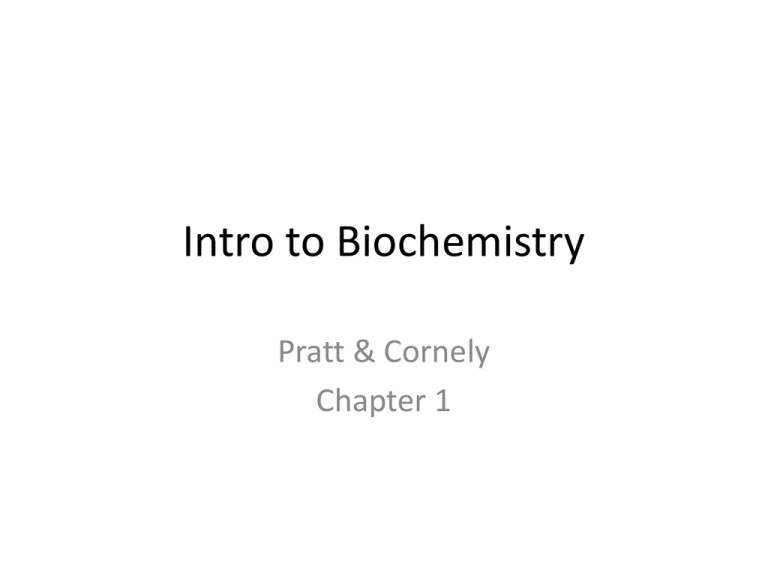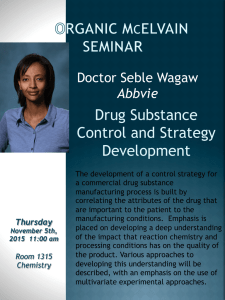Intro to Biochemistry Pratt & Cornely Chapter 1
advertisement

Intro to Biochemistry Pratt & Cornely Chapter 1 The Study of Biochemistry • The Basic Questions – What are we made of? – How do we store and use energy? – How do we pass on genetic information? • The Language of Chemistry – General Chemistry – Organic Chemistry Fundamentals • General Chemistry – Thermodynamics – Kinetics • Organic Chemistry – Structure – Intermolecular forces – Reactivity Biomolecules Problem 17 • Compare the solubilites in water of alanine, glucose, palmitate, and cholesterol. Explain. Biopolymers • Amino acid Protein (peptide bond) • NucleotideDNA/RNA (phosphodiester bond) • Carbohydrate polysaccharide (glycosidic bond) Structure Dictates Function Free Energy • • • • • • Enthalpy Entropy DG = DH – TDS Spontaneous Exergonic exothermic Problem 35. Urea dissolves readily in water. The beaker containing the dissolved compound is cold to the touch. What conclusions can you draw about the sign of the enthalpy change and the entropy change for this process? Coupled Reactions Problem 38 Glyceraldehyde-3-phosphate (GAP) is converted to 1,3-BPG according to the reaction below. Is this reaction spontaneous? GAP + Pi + NAD+ 1,3BPG + NADH DG = 6.7 kJ/mol The reaction above can be coupled to a reaction in which 1,3-BPG is converted to 3PG. Write the overall equation, including the change in free energy for the converstion of GAP to 3PG. 1,3BPG + ADP 3PG + ATP DG = -18.8 kJ/mol Redox Reactions of Carbon • Oxidation: lose electron(s) – Gain C-O/lose C-H – Spontaneous • Reduction: gain electron(s) – Gain C-H – Nonspontaneous Origins • Associated problems • Theories • Cells – Prokaryotes – Eukaryotes



